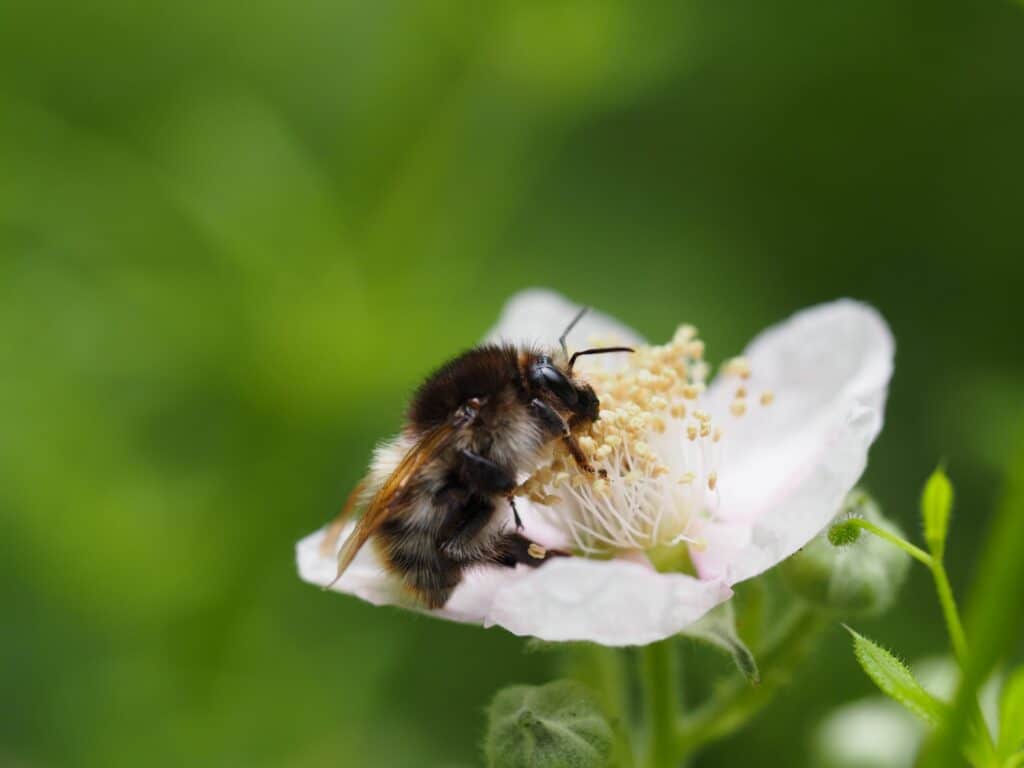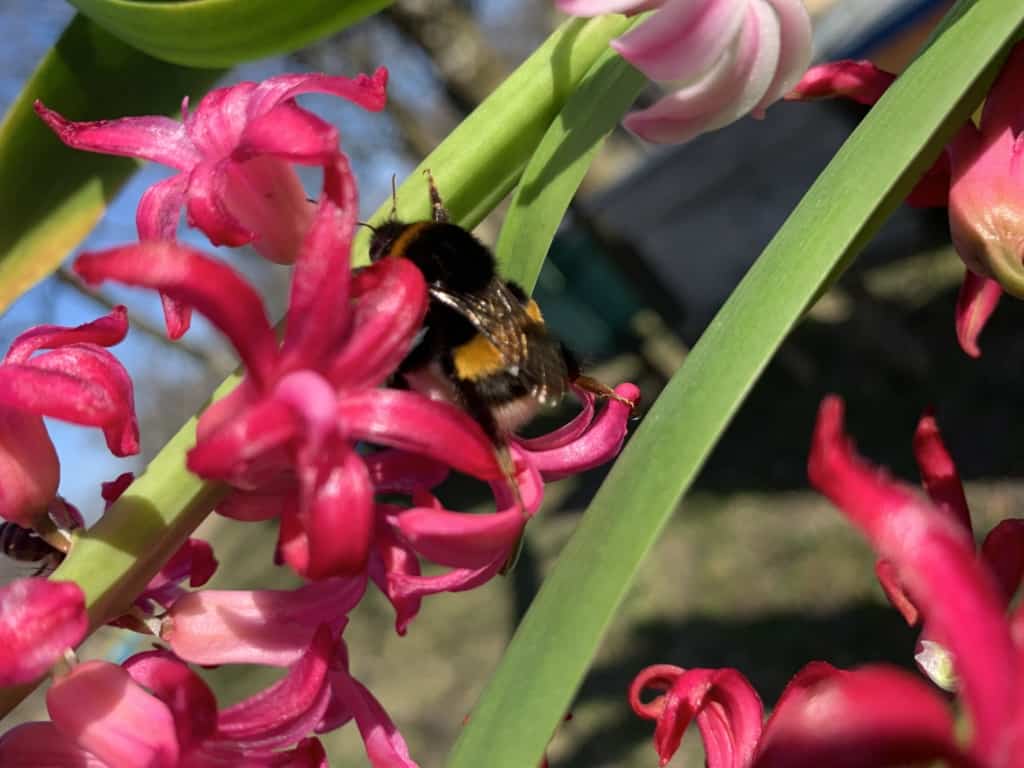Bumblebee vs honeybee
Honeybees and bumblebees are both types of social bees that are important pollinators for flowers, fruits, and vegetables. However, there are several differences between these two types of bees that set them apart.
Appearance
One of the main differences between bumblebees and honeybees is their appearance. Bumblebees are typically larger and rounder than honey bees and they have a fuzzy appearance due to their dense hairs. Bumblebees also have a more varied colouration, with black, yellow, and brown being the most common colours. Additionally, bumblebees are plump and round compared to the more slender honey bees.
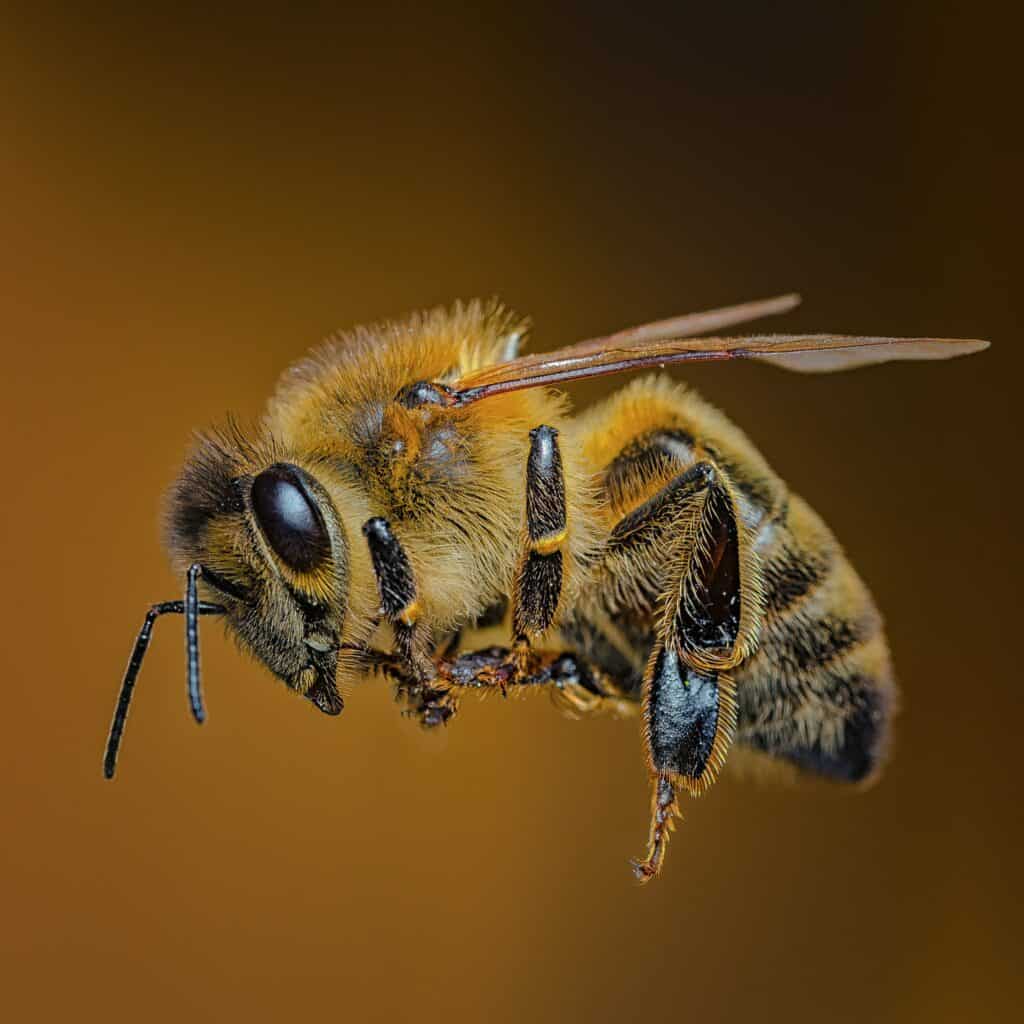
Honey bees, on the other hand, are smaller and more slender, and they have a smooth, shiny appearance due to their lack of hair. Honey bees are also typically more uniform in colour, with shades of yellow and brown being the most common.
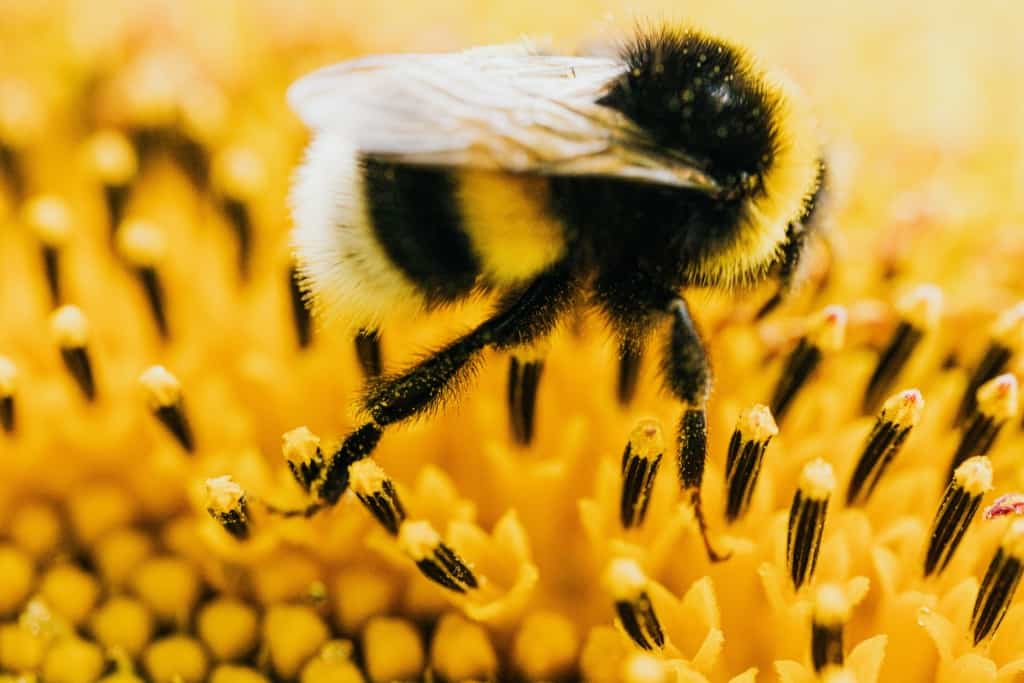
Social structure of worker bees
Another difference between bumblebees and honeybees is their behaviour and social structure. Bumblebees are solitary insects and only come together to mate and reproduce. They do not have a queen as honey bees do, and the females are responsible for foraging for food, building nests, and caring for the young. Honey bees, on the other hand, live in large colonies with a highly organized social structure. The colony is led by a single queen who is responsible for reproducing and laying eggs, while the worker bees take care of the young, defend the hive, and forage for food. The honeybee queen plays a crucial role in the colony, as she is responsible for reproducing and laying eggs. A honeybee queen can live over three years, contributing to the colony’s stability during winter months. Honey bees live in large colonies with thousands of members, while bumble bee colonies contain only a few hundred members.
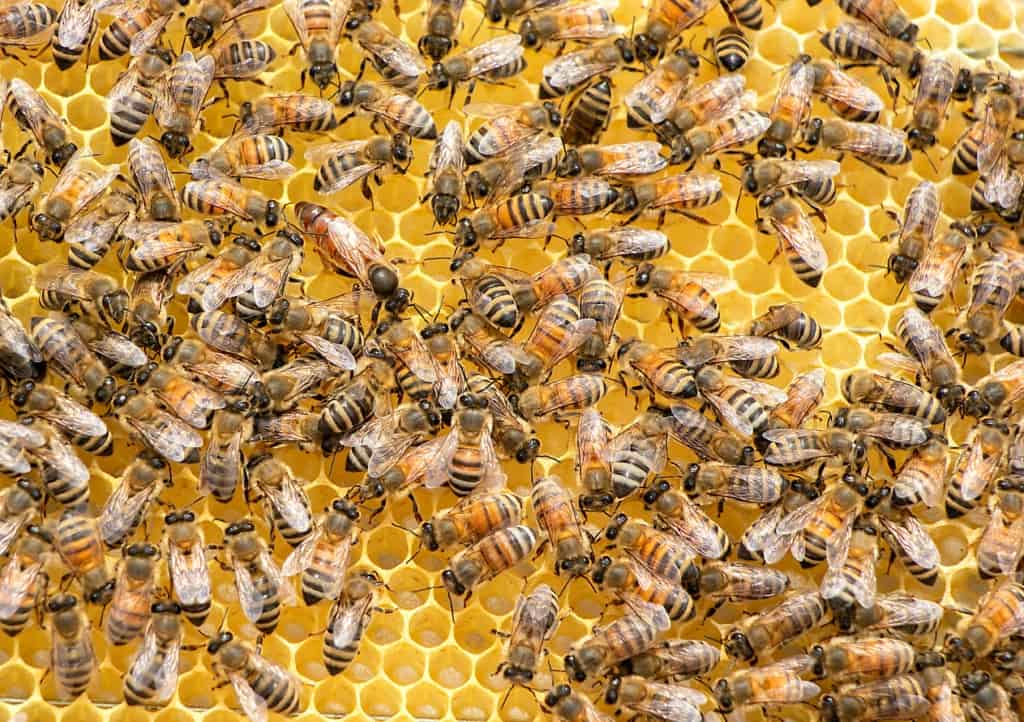
In addition to bumblebees and honeybees, there are other types of bees such as sweat bees, which also play a role in pollination but have different social structures and behaviours.
Honey Stores
Honey stores are a crucial aspect of honey bee colonies. Honey bees produce excess honey to feed the colony over the winter months when nectar-rich flowers are scarce. They store this honey in the honeycomb cells of their hive, which are made up of hexagonal wax cells. The honey is produced by collecting nectar from flowers and transforming it into honey through a process involving enzymes and water content reduction. Honey bees are able to store large quantities of honey, which can last the colony for several months. In contrast, bumble bees do not produce excess honey and only store small amounts of nectar in their wax “honey pots” for immediate use.
Bumblebees and honey bees also differ in the way they make and store their food. Bumblebees gather nectar and pollen from flowers to feed themselves and their young, but they do not produce honey in the same way that honey bees do. Honeybees produce excess honey, which they store for use during the winter months. Bumblebees do not have the specialized wax-producing glands that honey bees have, so they are unable to produce the honeycomb cells that honey bees use to store honey. Honey bees produce large quantities of honey to sustain their colonies through winter, whereas bumble bees do not need such stores since most die in winter except for the queen.
Instead, bumblebees will store their excess food in small pots made from pollen and nectar, which they seal with a small amount of wax. Honey bees, on the other hand, produce large quantities of honey by collecting nectar from flowers and storing it in the honeycomb cells of their hive. They also add enzymes to the nectar to break down the sugars and reduce their moisture content, which helps to preserve it as honey in their honey stores.
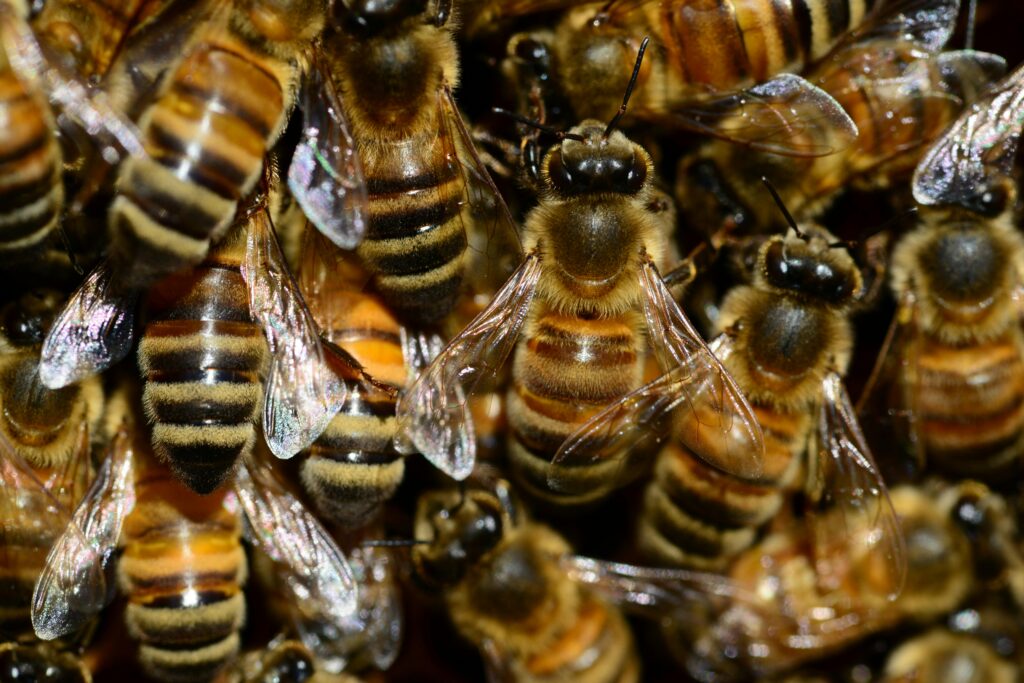
Habitat of bumblebee nests
A final difference between bumblebees and honeybees is their distribution and habitat. Bumblebees are found in many parts of the world, but they are most common in temperate regions. They tend to live in small bumblebee nests that are hidden in the ground or in other protected areas. Bumblebees create a new nest each spring, while honey bees may live in the same hive for many years. Honey bees, on the other hand, are found in almost every part of the world and are often kept by humans for their honey-producing capabilities.
Honeybees will build their nests in trees, cavities in walls or cliffs, or in man-made hives, creating honeybee nests that can house thousands of bees. In conclusion, while bumblebees and honey bees are both important pollinators and have some similarities, they also have several differences in their appearance, behaviour, food-gathering habits, and the way honeybees nest. Understanding these differences can help us to better appreciate the diversity of the bee world and the important role that these insects play in our ecosystems.
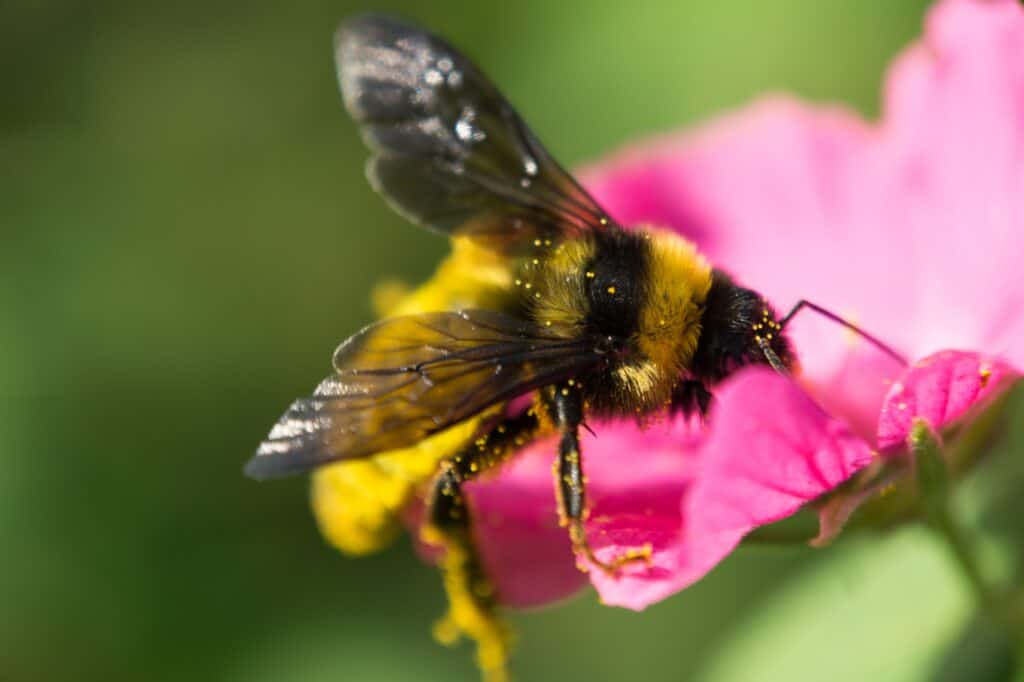
Pollination and Importance
Both honey bees and bumble bees are indispensable pollinators of flowering plants, playing a vital role in the reproduction of many plant species. Honey bees are particularly renowned for their contribution to agriculture, pollinating around one-third of the world’s crops, including a wide variety of fruits, vegetables, and nuts. Their diligent work ensures that we have a steady supply of these essential foods.
Bumble bees, while not as prolific in crop pollination as honey bees, are crucial for certain plants. They are especially important for crops like tomatoes, blueberries, and cucumbers. One of the unique abilities of bumble bees is “buzz pollination,” a technique where they vibrate their bodies to release pollen from flowers that are otherwise difficult to pollinate. This method is particularly effective for certain plant species that honey bees cannot pollinate as efficiently.
The pollination strategies of honey bees and bumble bees also differ. Honey bees tend to focus on high-pollen areas, methodically working through flowers to gather as much pollen as possible. Bumble bees, on the other hand, are more generalist in their approach, often pollinating a variety of plants as they move from one to another.
The importance of pollination cannot be overstated. It is essential for the reproduction of many plant species and the production of food crops. Without the diligent work of honey bees and bumble bees, many plants would struggle to reproduce, leading to a significant decline in food production and overall ecosystem health. These flying insects are truly the unsung heroes of our natural world.
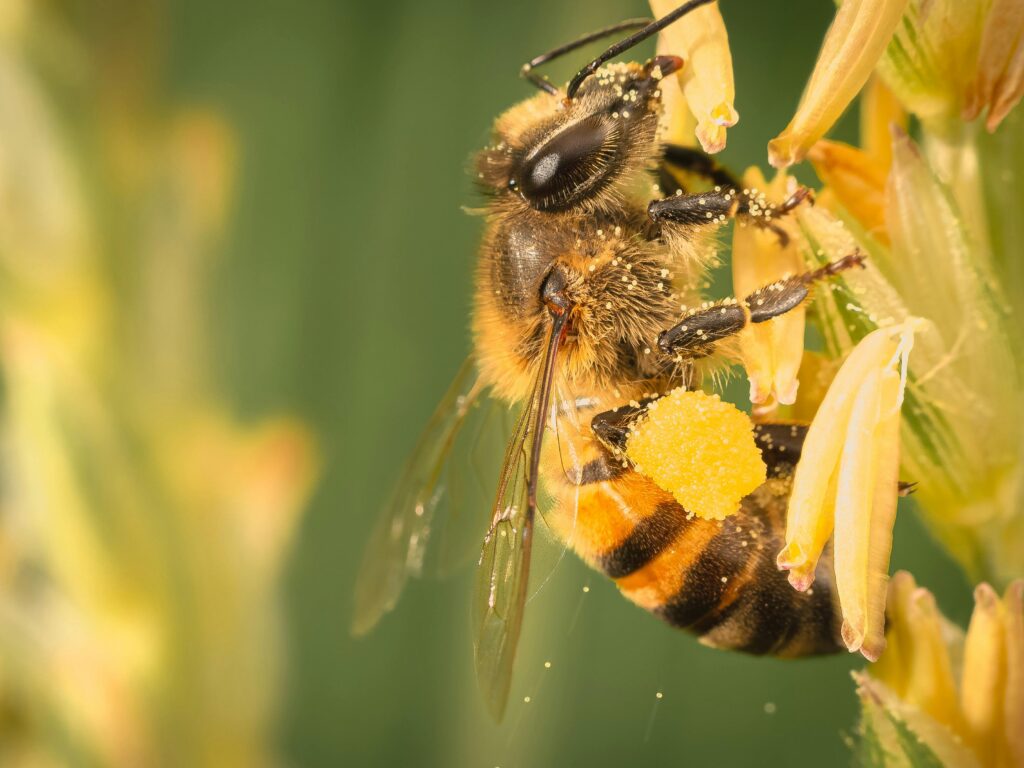
Diet and Nutrition
Both honey bees and bumble bees are essential pollinators of flowering plants, and their diet consists mainly of nectar and pollen. Honey bees collect nectar from a wide range of flowers and transform it into honey, which serves as their primary source of energy. They also gather pollen, rich in protein and other nutrients, to feed their young. Bumble bees, on the other hand, also collect nectar and pollen from flowers to sustain themselves and their offspring. They play a crucial role in pollinating many crops, including tomatoes and blueberries, and are capable of flying in colder temperatures than honey bees, making them valuable pollinators in early spring.
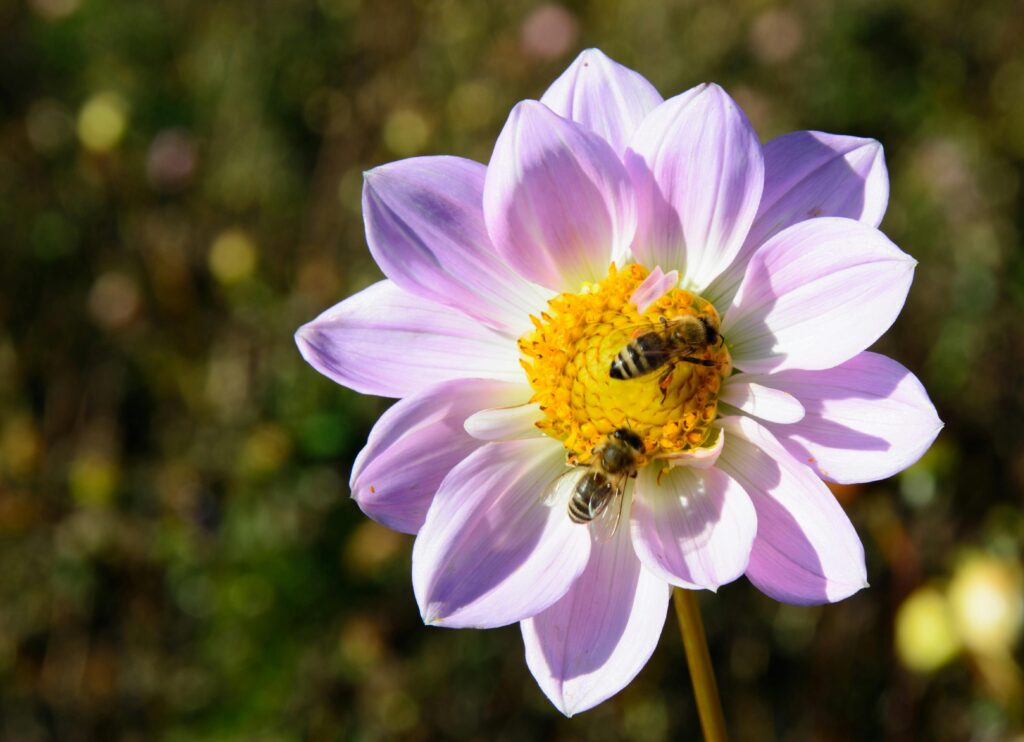
Aggression and Stings
When it comes to aggression and stings, honey bees and bumble bees exhibit different behaviors. Honey bees are generally non-aggressive and will only sting when they perceive a direct threat to their hive or when they are provoked. Their stinger is barbed, which means it gets lodged in the skin of the person they sting, causing the bee to die shortly after.
Bumble bees, in contrast, are typically even less aggressive and will only sting when their nest is threatened or if they are handled carelessly. Unlike honey bees, bumble bees have a smooth stinger, allowing them to sting multiple times without harm to themselves. Bumblebees can sting multiple times without dying, which is a significant difference from honey bees whose stingers are barbed and result in their death after stinging.
Both honey bees and bumble bees are generally docile creatures and will not attack unless they feel threatened. However, it is crucial to exercise caution when approaching or handling bees, as some individuals may have severe allergic reactions to their stings. If stung by a bee and experiencing symptoms such as difficulty breathing or swallowing, it is imperative to seek medical attention immediately.

Understanding the behavior of these bees can help us coexist peacefully with them, appreciating their vital role in our ecosystems while minimizing the risk of stings.
Life Cycle and Colony Dynamics
Honey bees live in large colonies with a highly organized social structure. The colony is led by a single queen bee, who is responsible for reproducing and laying eggs. Worker bees, which are female bees responsible for foraging, caring for young, and defending the hive, make up the majority of the colony. The queen bee can live for up to five years, while worker bees typically live for four to six weeks during the summer. Bumble bees, in contrast, are more solitary insects and do not live in colonies like honey bees. They are important pollinators of many crops, but their populations are declining due to habitat loss and other environmental factors.
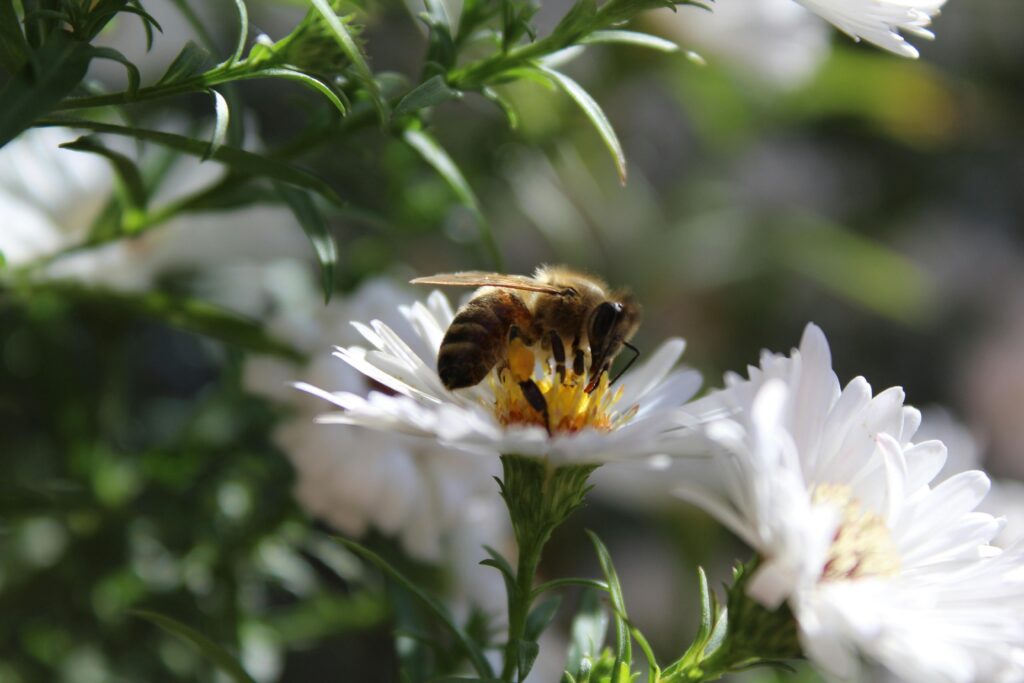
Threats and Conservation
Both honey bees and bumble bees are facing significant threats to their populations. Honey bees are susceptible to diseases and parasites, such as varroa mites, which can decimate entire colonies. Bumble bees, on the other hand, are facing habitat loss and fragmentation, as well as the detrimental effects of pesticide use, which can harm their populations. Climate change is also impacting both honey bees and bumble bees, as changing weather patterns and temperatures can disrupt their ability to pollinate flowers. Conservation efforts, such as planting bee-friendly flowers and reducing pesticide use, are crucial for protecting these important pollinators. Additionally, beekeepers and researchers are working to develop new strategies for managing honey bee colonies and safeguarding bumble bee populations.
